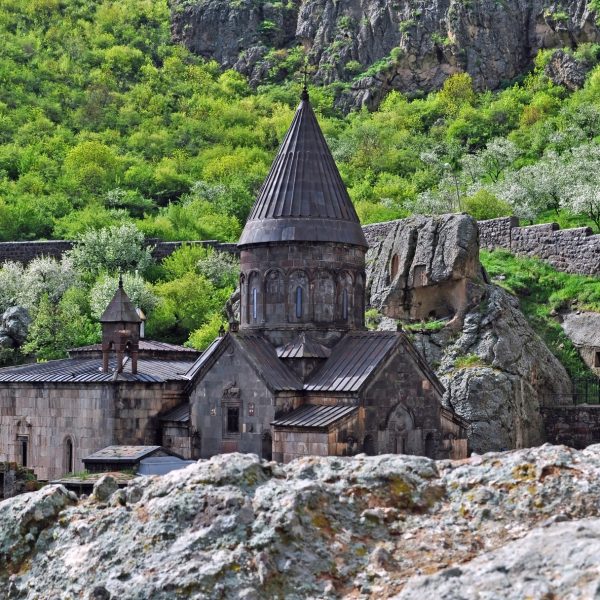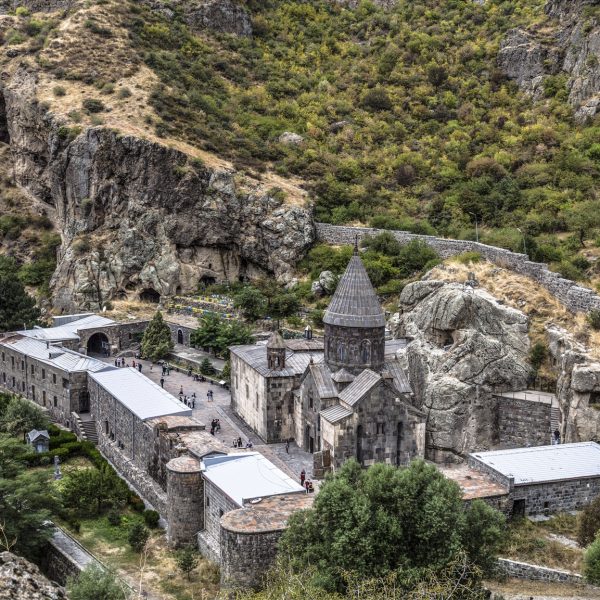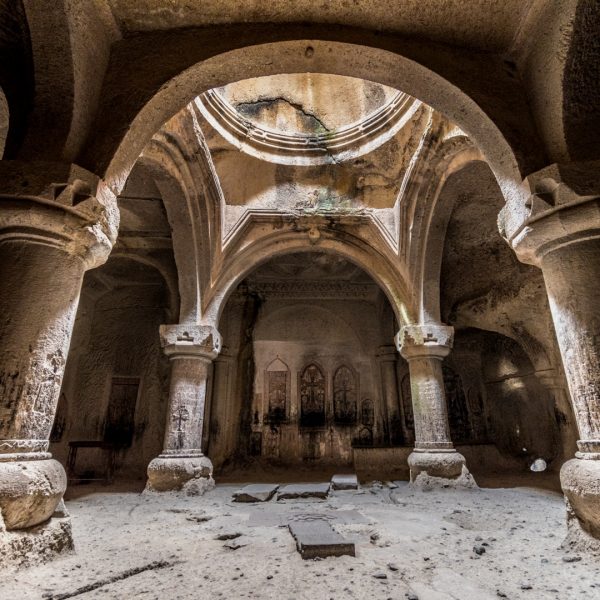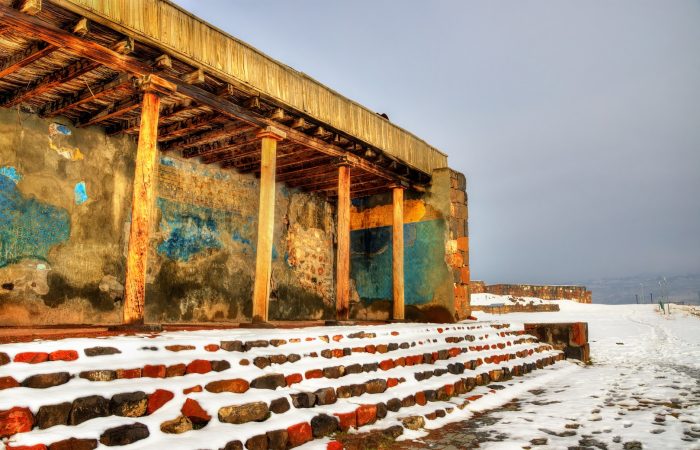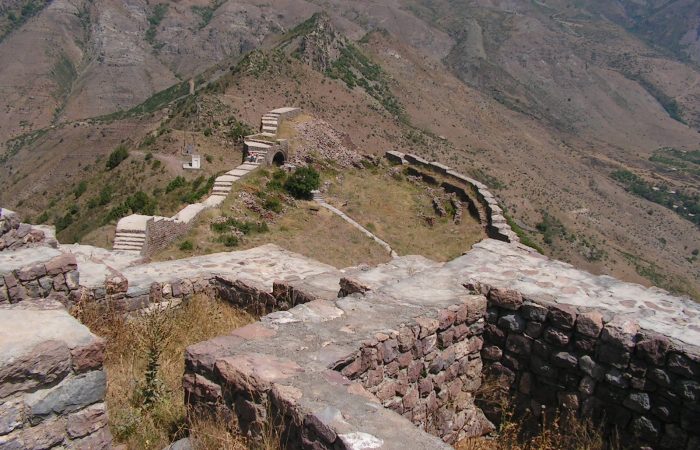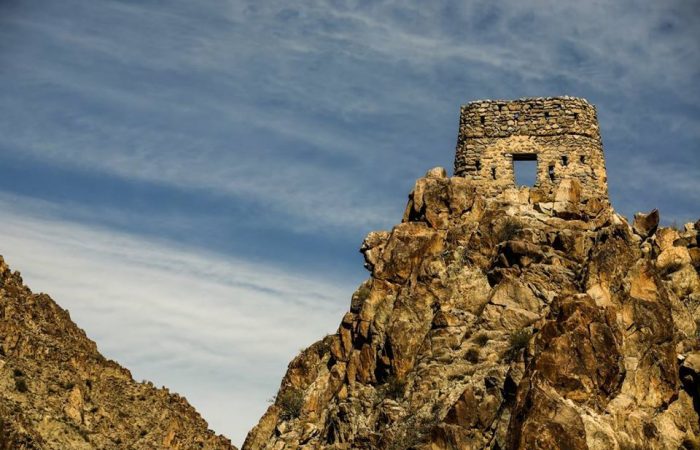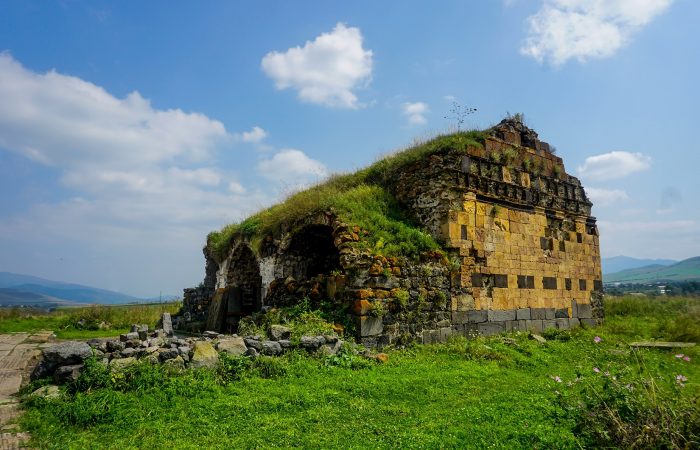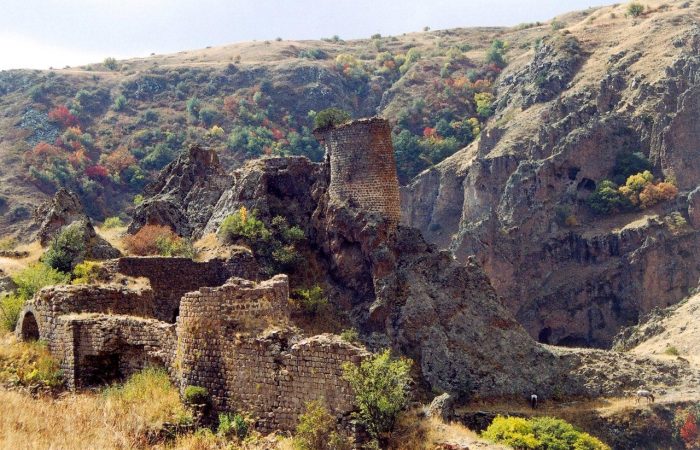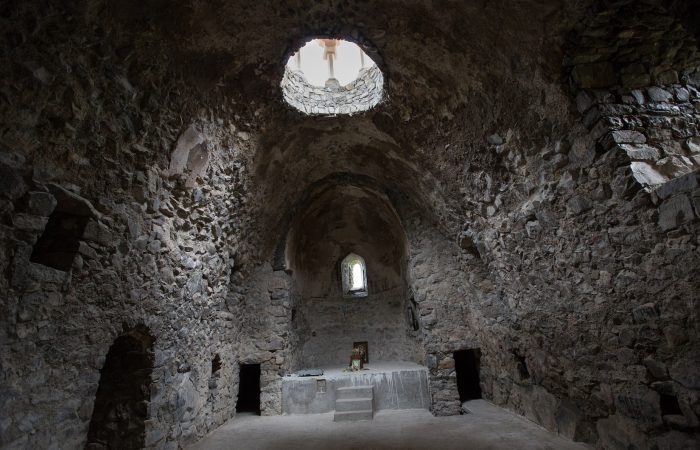Historical sources show the monastery included several churches. It also served as a manuscriptorium, music academy and a pilgrimage site.
During the 920 Arab invasions the monastery was plundered, and though later it was rebuilt and fortified, many manuscripts were lost forever. While Ayrivank is considered to be a 13th century church, the inscriptions found in the monastery territory date back to the 1160s. The monastery started flourishing after Zakaryan’s released most of Armenia from the Seljuks. At the end of the 13th century Geghardavanq was one of the primary pilgrimage sites. Other than that, the Holy Lance was preserved there. It was the spear with which the Roman soldier pierced the side of Jesus Christ while Jesus was on the cross. In that regard, Ayrivank was renamed Geghardavanq (meaning the monastery of spear; geghard means spear in Armenian). A legend has it that another relic was kept in the monastery – a piece of Noah’s Ark.
During the course of history the monastery suffered from the Mongol and later Lenk Timur’s invasions. It was partially destroyed because of the 1127, 1679 and 1840 earthquakes but was restored and renovated in the following years serving as the summer residence of the Catholicoses of All Armenians.
Geghard Monastery: The Proshyans
After Armenia was released due to Armenian-Georgian united forces, lands mainly in the Northern part of Armenia were granted to Ivaneh Zakaryan. The latter sold Geghardavanq to Prince Prosh who initiated the construction of rock churches in the monastery. The Proshyans also installed an irrigation system, decorated the monastery with carvings and khatchkars (cross stones), and also the second/upper sepulcher was built.
Geghard Monastery: Ayrivank and the Holy Lance
Ayrivank was known for the relics kept there. They were mainly donated to the church in the 12th century. The church got its name “Geghardavanq” due to one of the relics, the geghard (lance) that was being kept there. The sacred relic turned the monastery into one of the main pilgrimage sites for believers. The Holy Lance is now kept in the Treasury of the Mother Cathedral of Holy Ejmiatsin. Samples of the Holy Lance can be found in Vienna, Krakov and Rome, nevertheless, the one true lance is considered to be the one that’s currently kept in the Mother Cathedral of Holy Ejmiatsin.
Geghard Monastery: Katoghike Church
Meaning main church, Katoghike was built in 1215 during the rule of the Zakaryan Dynasty, an inscription found at the western entrance states. The gavit adjacent to the church dates back to the same period. The walls of the church were covered with frescoes the traces of which can be seen today.
Geghard Monastery: Avazan Church
Rock-cut Avazan Church was built in the middle of the 13th century. A spring considered sacred until today can be found there. During the Hellenistic period the place was a pilgrimage site and was probably one of the first springs dedicated to the cult of water still in the Bronze Age.
Geghard Monastery: Proshyan Sepulcher
Initially ordered by the Zakaryans in 1215, the building was constructed for Prince Prosh, who having bought the monastery from the Zakaryans had ordered to expand the dome hall. Despite the family’s wealth and power their graves are simple and modest.
Geghard Monastery: Saint Astvatsatsatsin Church
Saint Astvatsatsatsin Church is one of the greatest and most significant achievements of Armenian medieval architecture. Entirely carved by hand it took over 40 years to complete the church construction the most impressive part being the fact it was carved from the top down. The cracks on the walls were caused by the various earthquakes. The last one occurred in 1679. Five years after that earthquake the church was rebuilt and reopened being converted into the summer residence of the Catholicos of All Armenians.
The initial building for the church was constructed during the reign of the Zakaryans, in between 1215-1225. In 1283, upon the order of the Proshyan family the church was expanded by architect Galdzak, who is believed to be the architect of Avazan Church and the Upper gavit.
To the left of the altar there is a unique cross. On the top of the cross there are the symbols of the Tree of Life and the Sun, and at the base there is the symbol of Adam’s head. On the cross sides unique small crosses are carved. They are made in Armenian style. On both sides of the cross a hunting scene is depicted. It perhaps pictures the Proshyans. As to the altar, it as well bears uniqueness in the meaning that it has only one set of steps. On the opposite side of the altar there is a carved throne with a lion-head on it. The latter gives ground to think it was meant for the Proshyan’s to whom the church belonged.
Geghard Monastery: Upper Gavit
According to an inscription, the upper gavit was built in 1288 and was meant for Prince Prosh’s son Papaq and his wife Ruzuqan. Along the narrow stairway leading to the gavit khatchkars are carved in rock. The roof lies on four columns, while the arches because of being all hand-carved are much lower. They divide the hall into 9 equal parts with a dome on the top. The gavit also served as a mausoleum, and it’s very much possible that it was originally made for that purpose. The mausoleums of only Merik and Grigor Proshyans have been preserved.
The gavit acoustics is but amazing. It was perfect for sharakans (Armenian religious songs). It seems the sounds were soaring high up and pouring into the neighboring halls. The monastery is known as a music school. Among the authors of sharakans there was a woman named Sahakadukht, who taught in the school in the 8th century. Back in those times women were not allowed close to the priests, but Sahakadukht was so much talented and popular due to her works that she was eventually allowed to teach in the monastery but hiding behind a curtain.
Also, at the back of the gavit there is an opening. It is thought to be made with the purpose the sharakans could be heard down there too. Among the visitors of the monastery there always appear people who turn out to be sharakan singers, so the acoustics of the gavit can always be checked out. Be sure to be impressed.
Lastly, a very important part of the monastery made up the cells where the priests used to live and work. Some of them even led a very strict life there and chose to stay there until the end of their lives. It is believed that there were over hundred cells, many of which have been destroyed during earthquakes.
So as a most sacred site Geghard monastery has so much to recount and tell you, that you will hardly feel bored or exhausted. Carefully listen to the story the stones will be telling you and be sure to learn a lot of new things that will be a valuable addition to your overall knowledge.

